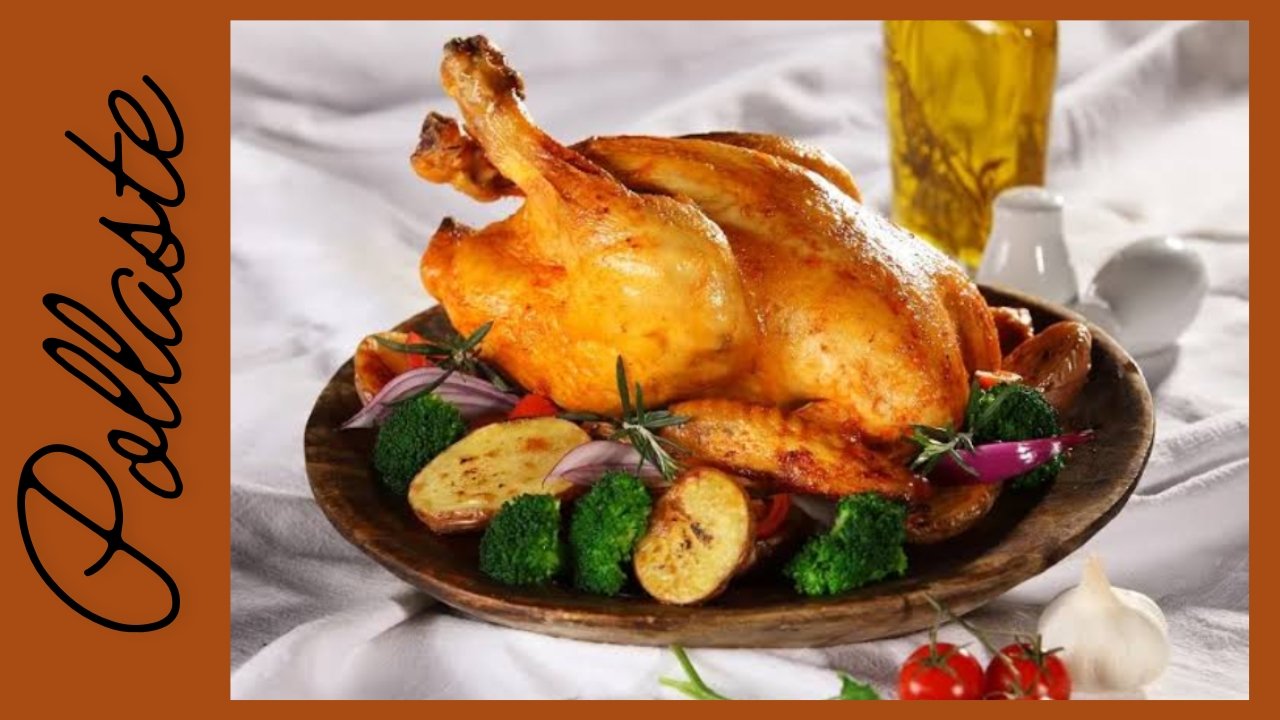Welcome, food enthusiasts, amateur chefs, and gourmet explorers! Today, we embark on a culinary journey to uncover the mystery behind Pollaste. This enigmatic dish, shrouded in delicious mystery, has captured the imaginations and taste buds of many. Whether you’re a seasoned chef or just starting your culinary adventure, this guide will provide you with everything you need to know about Pollaste. So, tie on your apron, sharpen your knives, and let’s dive into the world of Pollaste!
Exploring the Roots
The Origins of Pollaste
Pollaste, often described as a culinary gem, boasts a rich history that has evolved over centuries. Its origins trace back to ancient culinary practices, where it was a staple among various cultures. While the exact birthplace of Pollaste remains a subject of debate among historians, its influence is undeniably widespread.
The Cultural Significance
Pollaste holds a special place in the hearts of those who prepare and consume it. It’s more than just a dish; it’s a cultural artifact that tells a story of tradition, innovation, and community. From festive gatherings to everyday meals, Pollaste has played a role in bringing people together.
The Ingredients
Key Components of Pollaste
Pollaste’s magic lies in its ingredients. Let’s break down the essential components that make this dish so special:
Protein: Traditionally, Pollaste uses chicken as its primary protein source. The chicken is often marinated to enhance its flavor.
Spices and Herbs: A blend of aromatic spices such as cumin, coriander, turmeric, and paprika give Pollaste its distinctive taste. Fresh herbs like cilantro and mint add a refreshing element.
Vegetables: Pollaste incorporates a variety of vegetables, including bell peppers, tomatoes, onions, and garlic. These vegetables not only add flavor but also contribute to the dish’s nutritional value.
Base: Depending on the regional variation, Pollaste can be served with rice, couscous, or flatbread. The choice of base complements the flavors and textures of the dish.
The Significance of Each Ingredient
Each ingredient in Pollaste plays a crucial role in creating a harmonious balance of flavors. The spices and herbs provide depth and complexity, while the vegetables add natural sweetness and freshness. The protein component ensures a hearty and satisfying meal.
The Cooking Process
Traditional Preparation Methods
Traditional methods of preparing Pollaste involve marinating the chicken in a mixture of yogurt and spices, allowing it to absorb the flavors deeply. The marinated chicken is then slow-cooked with vegetables and spices, resulting in a tender and flavorful dish.
Modern Twists
While traditional methods are cherished, modern chefs have put their own spin on Pollaste. From using sous-vide techniques to experimenting with different proteins like tofu or lamb, contemporary interpretations of Pollaste offer a fresh perspective on this classic dish.
Step-by-Step Recipe
Let’s dive into a step-by-step recipe for preparing traditional Pollaste:
Ingredients:
2 lbs chicken (cut into pieces)
1 cup yogurt
2 tbsp olive oil
1 large onion (finely chopped)
3 cloves garlic (minced)
1 bell pepper (sliced)
2 tomatoes (diced)
1 tsp cumin
1 tsp coriander
1 tsp turmeric
1 tsp paprika
Salt and pepper to taste
Fresh cilantro and mint (for garnish)
1 cup basmati rice (optional)
Instructions:
Marinate the Chicken: In a large bowl, mix yogurt, cumin, coriander, turmeric, paprika, salt, and pepper. Add the chicken pieces and coat them evenly. Cover and refrigerate for at least 2 hours.
Prepare the Base: If serving with rice, cook the basmati rice according to package instructions. Set aside.
Cook the Vegetables: In a large pot, heat olive oil over medium heat. Add chopped onions and minced garlic. Sauté until the onions are translucent.
Add the Chicken: Add the marinated chicken to the pot and cook until it starts to brown.
Add Vegetables: Add the sliced bell pepper and diced tomatoes. Stir well to combine.
Simmer: Reduce the heat to low, cover the pot, and let it simmer for 30-40 minutes, or until the chicken is fully cooked and tender.
Garnish and Serve: Garnish with fresh cilantro and mint before serving. Serve hot with the cooked rice or your preferred base.
The Taste Test
First-Hand Experiences
Food enthusiasts and chefs who have tasted Pollaste often describe it as a symphony of flavors. The combination of spices, tender chicken, and fresh vegetables creates a dish that is both comforting and exciting.
Reviews from Experts
Renowned chefs and culinary critics have praised Pollaste for its versatility and depth. Chef Sarah Thompson, a celebrated culinary expert, said, “Pollaste is a dish that transcends borders. Its rich flavors and cultural significance make it a must-try for any food lover.”
Health and Nutritional Benefits
Nutritional Analysis
Pollaste is not only delicious but also nutritious. It’s packed with protein, vitamins, and minerals. The use of fresh vegetables and lean protein sources makes it a balanced meal.
Health Advantages
Rich in Protein: The chicken in Pollaste provides a high-quality protein source essential for muscle growth and repair.
Loaded with Vitamins: Vegetables in Pollaste are rich in vitamins A, C, and K, which support immune function and overall health.
Antioxidant Properties: Spices like turmeric and paprika contain antioxidants that may help reduce inflammation and promote overall well-being.
Popularity and Variations
Global Popularity
Pollaste has gained international acclaim, finding its way into kitchens and restaurants worldwide. Its adaptability and rich flavors have made it a favorite among food enthusiasts.
Regional Variations
Different regions have added their unique twist to Pollaste, creating delightful variations:
Mediterranean Pollaste: Features olives, feta cheese, and a touch of lemon zest.
Indian Pollaste: Includes additional spices like garam masala and cardamom for a more intense flavor profile.
Asian Pollaste: Incorporates soy sauce, ginger, and sesame oil for an exotic twist.
You May Also Like: Discover Süberlig: A Culinary Adventure through Turkey
Conclusion
Our journey into the world of Pollaste has revealed the rich history, diverse ingredients, and delectable flavors that make this dish a culinary gem. Whether you’re a seasoned chef or a home cook, Pollaste offers a delightful experience worth exploring.
We encourage you to try your hand at preparing Pollaste and share your experiences with us. Who knows? You might uncover your variation of this timeless dish.
Happy cooking, and may your kitchen be filled with the enchanting aromas of Pollaste!
Frequently Asked Questions
What is Pollaste?
Pollaste is a flavorful and aromatic dish traditionally made with marinated chicken, a variety of vegetables, and a blend of spices and herbs. It’s known for its rich and complex flavor profile and is often enjoyed with rice, couscous, or flatbread.
How do I make sure the chicken in Pollaste is tender?
To ensure the chicken is tender, marinate it in yogurt mixed with spices for at least 2 hours (overnight if possible). Slow cooking the chicken at a low temperature will also help it turn out tender and juicy.
Can I make Pollaste with different proteins?
Yes, Pollaste can be made with various proteins like lamb, tofu, or even seafood. While chicken is traditional, experimenting with different proteins can lead to delicious and unique interpretations of the dish.
What are some common variations of Pollaste?
Common variations of Pollaste include Mediterranean Pollaste with olives and feta cheese, Indian Pollaste with additional spices like garam masala, and Asian Pollaste incorporating soy sauce and sesame oil. Each variation offers a different flavor twist while maintaining the essence of the dish.
Is Pollaste a healthy dish?
Yes, Pollaste is considered a healthy dish as it is rich in protein, vitamins, and minerals. The use of fresh vegetables and lean proteins contributes to its nutritional value, while spices like turmeric and paprika provide antioxidant properties that promote overall well-being.











